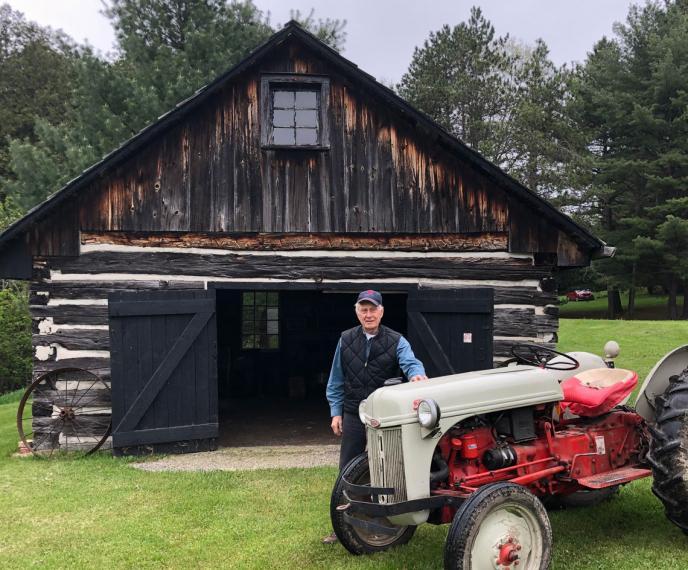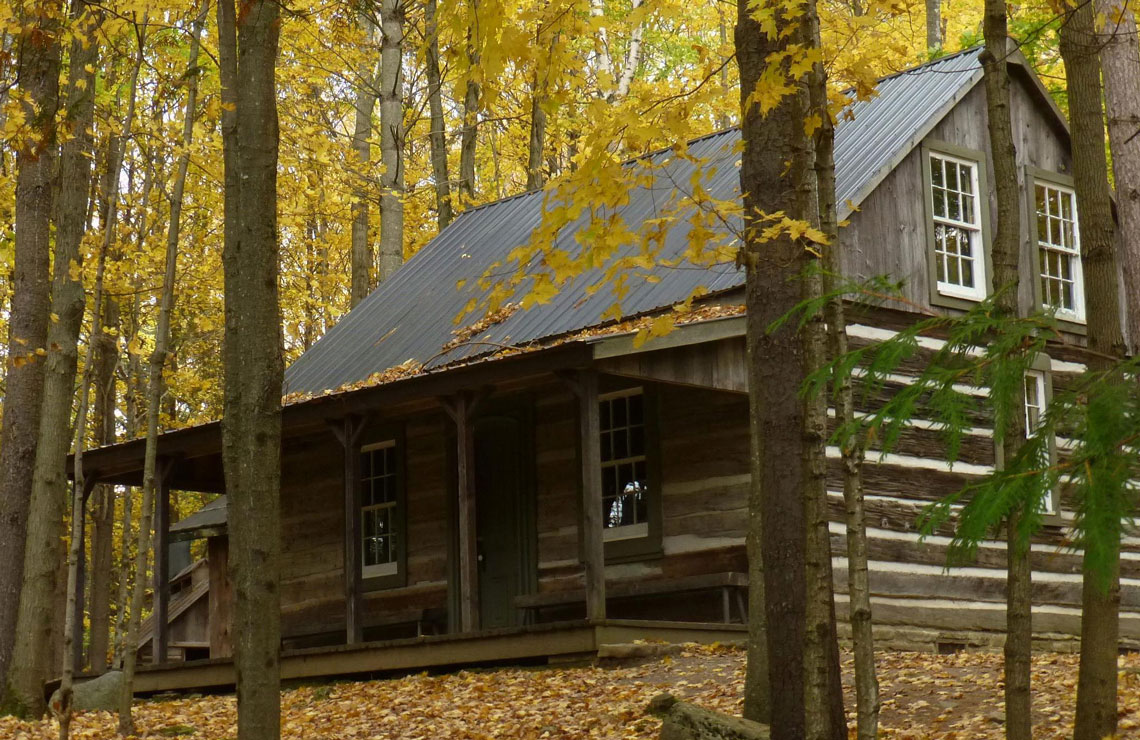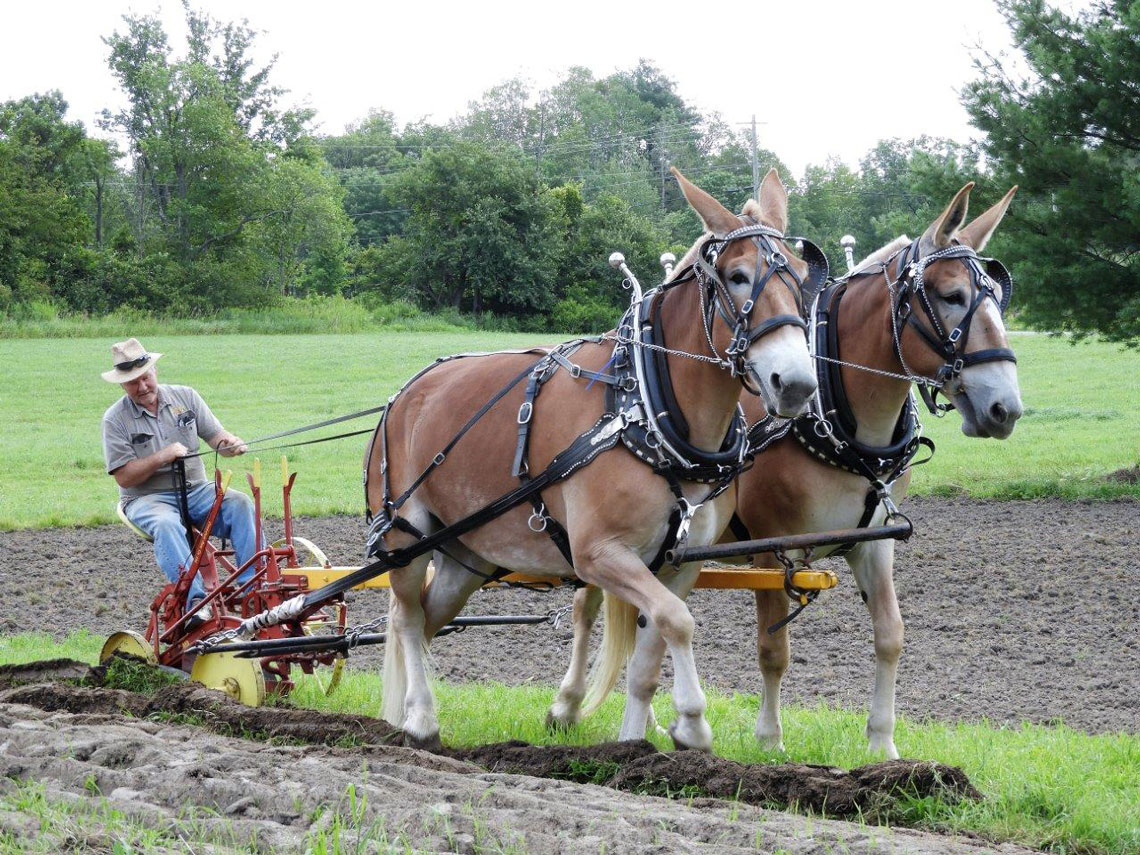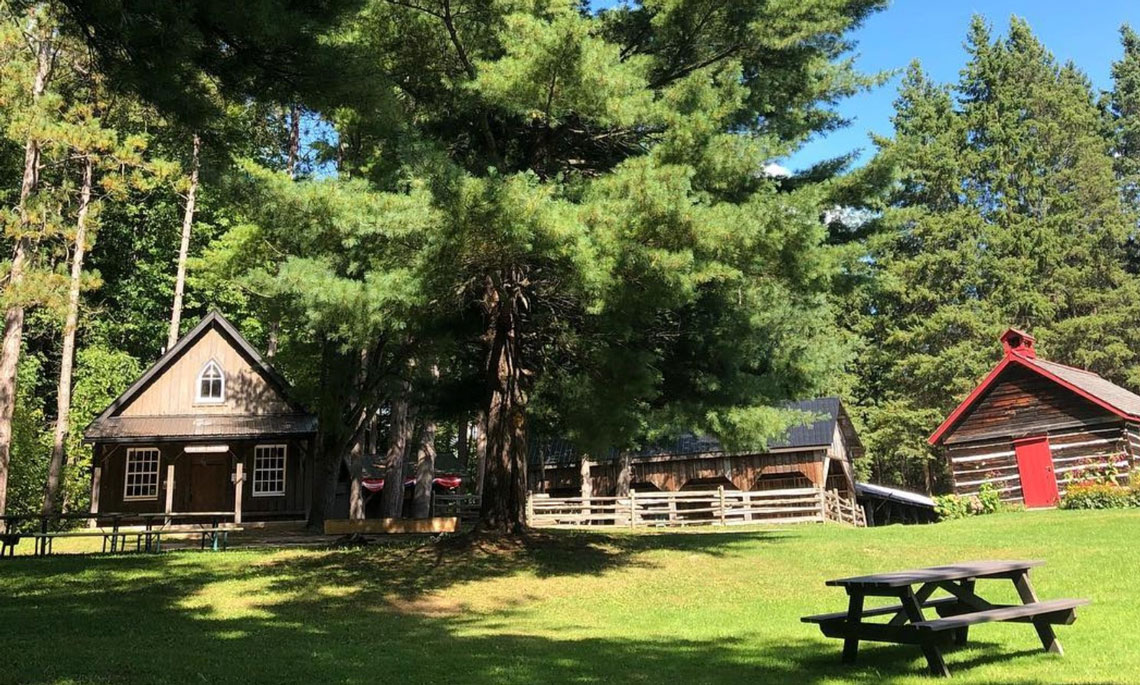Alumnus brings together a community to restore agricultural history

Logically, we know stepping back in time isn’t possible. But at the O’Hara Mill Homestead in Madoc, Ontario, it seems like it just might be.
When walking through the rural setting of the homestead visitors can see a fully restored sawmill with a dam and covered bridge, a log house, school, carpenter and blacksmith shops, and much more. Visitors step back into the 1800’s and experience agriculture as it was.
“When I stepped onto the property, it made me feel like I was on my grandfather’s farm. I thought, ‘My gosh this is a gorgeous beautiful setting. It has to be saved,” says David (Dave) Little, OAC ’61.
Dave first visited the homestead following his retirement as an agricultural representative in the area. He had just ended a 30-year-career, and unknown at the time, he was about to start a new career as a local historian.
He had heard a rumour that the local conservation authority, which owns the homestead was planning on abandoning the buildings.
The building roofs were leaking, some of the floors were caved in and it was clear the remains of the original settlers’ farm were not being taken care of.
After seeing the property, Dave decided to take action.
“I have always loved farming. Even though I worked with frontline modern farmers as an Ag Rep, I had a love for my two grandfathers who farmed in the old way.”
When he saw the O’Hara Mill Homestead, he saw the potential of honouring this part of Ontario’s agricultural history.
19 years later, Dave and a group of local volunteers have passionately restored the homestead it’s buildings, saw mill, gardens and 85 acres of hiking trails.
Today the homestead is open to the public and hosts special events throughout the year showcasing the property and history, but also the skills and talents of the local community.
A diamond in the rough: Restoring O’Hara
In the beginning, the first step was acquire management of the O’Hara Farm Homestead and Conservation Area from the conservation authority. Following two years of community advocacy, day-to-day management was handed over to a group of local volunteers who would form a not-for-profit organization which would have total management and operational control over the farm, buildings and homestead.
“It was unique,” says Dave. “Even today, I don’t think any conservation area has this type of partnership. It took a while to convince them that we could do it, but we did.”
Dave and his fellow volunteers thought there next task would be to convince the local community about the value of restoring the homestead, but that turned out not to be an issue.
“[Prior to the agreement], the local people didn’t feel they had any connection or input into operating the homestead. As soon as we had the legal agreement, they accepted the fact that it was a part of their heritage and took over and moved ahead quite quickly,” he explains.
His most treasured accomplishment on the site was the recreation of a log house on the property.

Early on, he and a friend discovered old foundation stones from the original log house and went to work to acquire a replacement. They found a settler’s log house near Bancroft, and despite the fact that it was in disrepair they had it moved to the site. They then begun work to restore the house to its original glory. Dave even researched and built a cooking fireplace in the house where volunteers cook meals to showcase how it was originally used.
Another unique element of the homestead is the sawmill, which Dave and his fellow volunteers got up and running after it had been out of commission for 38 years. The old wooden mill damn had also been condemned, but the volunteers went to work to find funds to restore it.
They secured a $100,000 grant from a local foundation, but original plans from the engineer hired by the conservation authority put a price tag of $340,000 for the project. The conservation authority agreed to cover the cost of the engineer plans, but that still left a gap of $300,000 in funding. Dave and the other volunteers decided to go ahead and see what could be done.
Miraculously, they built the dam to spec for $80,000 and used the remaining $20,000 to build a covered bridge on the damn.
“That’s probably the main example of what you can do when community people provide their labour and you get help from various supply companies,” he explains.
A passion project of restoration and community
The property was originally settled by the O’Hara family in 1823 and was purchased by the conservation authority in the mid 1950s.
Three generations of the prominent local family lived on the homestead before it was sold in the 50’s. The husbands of the first two generations were both local justices of the peace and the family established a sawmill early on as a side enterprise.
Dave and the other volunteers have collected this information over years. Many of the original documents, family diaries and journals were given to the conservation authority at the time it was acquired, but O’Hara family members have also contributed family heirlooms and artifacts to the project.
“As time went on, I guess they decided that the operation was going quite well and they wanted to return these items to be a part of the museum here,” shares Dave.
Descendants of the O’Hara family also support the project through volunteer efforts and personal donations.
Today, much of Dave’s contributions come in the form of finding ways to involve people’s skills and interests in the homestead.
“Each of the 10 pioneer buildings have key people that love that specific part,” he explains. “They run those areas and recruit people to help them.”
He points to the three people who love blacksmithing, the volunteers who curate and catalogue the main museum, and the volunteers who cook meals both in the modern fashion for special events and over the cooking fireplace, as it was done in the 1800s.

Finding people and involving them through their interests is fundamental to its operations. In fact, O’Hara Mill Homestead’s objective focuses on encouraging “the collective talents and visions of all interested persons in the promotion, maintenance and development of a vibrant historic homestead attraction for tourists and local people”.
Dave explains that with new volunteers comes new knowledge and exhibits.
“Recently we had a volunteer join who worked with the Indian Agriculture Program of Ontario,” adds Dave. “Through his work and experience he’s made more information and exhibits available that focus on the First Nations people,” on whose ancestral land the farm was established.
As the first European-descendant settlers in the area, Dave explains that the O’Hara greatly benefited from the knowledge shared by the local First Nations. “They taught them how to make maple syrup and how to grow Indian corn[CW1] . In return the O’Hara’s also shared knowledge [of their agricultural practices].”
The attractions of a 1800’s homestead
Dave recommends that visitors come for any of the special events hosted at O’Hara, and more details can be found here on the O'Hara website. The next event is Heritage Day, held on July 21st, where demonstrations are held to showcase all of the activities of 1800’s homestead life.
But he thinks the property offers something beyond a history lesson.
“To me it’s a beautiful setting and a free, relaxing atmosphere. There is no commercialism. So often we see in the comments we get that people enjoy that it is a real life setting.”
“Many places and museums set up on an open field and everything is brought there. Even though it is informative you don’t get carried back. O’Hara was a real farm.”
“I often see people sitting on the front porch of the house listening to the waterfall or reading a book. I even found people playing a harmonica,” he laughs. “There’s just something about the setting.”
The site does not charge a standard rate for admission, opting to ask for donations instead. A fact that further showcases the site’s focus on enhancing the community’s connection to its heritage.
“Today we have a very strong and capable group of people spearheading the efforts, and then there is all of the background support people who help for events and projects,” he shares.” I’m really very proud of all of the people who want to preserve their heritage.”
“I think that the fear of all museums and heritage projects is… will the next generation give a darn?”
“Although they didn’t experience this period of farming themselves, I want them to think ‘This is good for our community. It holds us together and I will learn one of these unique skills to be able to preserve it.’”
And as for Dave, he plans to continue offering his skills for as long as he can. He spends nearly every day working on projects for O’Hara; recruiting volunteers, fixing machinery, preparing the gardens and doing all sorts of tasks demanded by a community run heritage site.
“Everyone needs a focus. I’m almost 81 and I have more than I can do there. It’s wonderful to know that you can still be useful,” he says.
Dave is overly modest about his contributions, but thankfully they have not gone unnoticed.
He was been acknowledged with several volunteer awards, including the Sovereign's Medal for Volunteers presented by the Governor General of Canada, which he received last summer.
“Although I have had the privilege of being part of this undertaking from its conception,” reflects Dave, “this Sovereign's Award for Volunteers is really a tribute to the many volunteers and community supporters who have left their mark, over the past 19 years, on the development of this exciting pioneer farm destination.”
